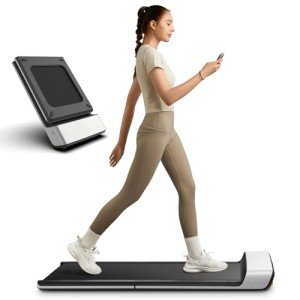Three Greatest Moments In Portable Treadmill History
The Ultimate Guide to Portable Treadmills: Fitness on the Go
In today's busy world, where time and space are typically high-ends we can not afford, maintaining a fitness routine can seem like a complicated task. Enter the portable treadmill— an ingenious solution that weds convenience with workout. This article intends to offer an extensive understanding of portable treadmills, their benefits, factors to consider, types, and more.
What is a Portable Treadmill?
A portable treadmill is a compact, lightweight variation of a standard treadmill, developed for simple transport and storage. These devices enable users to preserve an active lifestyle, no matter where they are. Whether it's at home, the workplace, or throughout travel, portable treadmills make it easier than ever to squeeze in a workout.
Table 1: Key Features of Portable Treadmills
Function
Description
Weight
Generally varies from 30 to 100 lbs
Size
Foldable or compact styles
Incline Options
Manual or automated incline settings
Speed Range
Usually 0.5 to 10 MPH
Display Functionality
Tracking for time, distance, speed, and calories burned
Foldability
Easy to keep under beds or in closets
Power Source
Electric or manual operation
Why Choose a Portable Treadmill?
1. Space-Saving Design
Many people live in homes with limited space, making large fitness center devices less useful. Portable treadmills use a compact option, folding easily for storage in closets or under beds.
2. Price
Acquiring a treadmill for a home gym can be a considerable financial investment. Portable treadmills are frequently more inexpensive than their full-sized counterparts, making them an available choice for many.
3. Convenience
With hectic schedules and on-the-go lifestyles, having a portable treadmill makes it easier to exercise whenever and wherever hassle-free. No more reasons about going to the gym— the fitness center can pertain to you!
4. Lightweight and Mobile
Most designs are created to be lightweight, permitting them to be easily carried. Whether moving from room to room in the house or bringing it along on a trip, setting up a portable treadmill is problem-free.
Types of Portable Treadmills
A. Manual Treadmills
Manual treadmills operate by the user's own effort, needing no electricity. This type is excellent for those who desire a basic style without any frills. However, the user needs to produce momentum for the belt to move, making it a little challenging for novices.
B. Electric Treadmills
Electric portable treadmills are battery-operated or plug-in makers that power the belt instantly, providing varied speeds and incline alternatives. hometreadmills of included advanced features such as workout programs, Bluetooth connectivity, and integrated speakers.
C. Folding Treadmills
These treadmills feature a folding mechanism, permitting the running surface to hide when not in usage. Most electric treadmills fall into this category, and they typically include wheels for easy transport.
D. Under-desk Treadmills
Developed for multitaskers, under-desk treadmills permit you to walk while working, promoting movement without disrupting your work. They are typically lower in profile to fit comfortably under basic desks.
Table 2: Types of Portable Treadmills
Type
Pros
Cons
Manual
Less expensive, no electrical energy required
Harder to utilize, restricted functions
Electric
Simpler to utilize, advanced features
More expensive, requires power source
Folding
Space-saving, easy to transfer
May be bulkier than non-folding designs
Under-desk
Motivates multitasking, promotes blood circulation
Minimal speed and incline options
Important Features to Consider
When picking a portable treadmill, it's important to think about different functions to guarantee it fulfills your needs:
- Weight Capacity: Assess the maximum weight limit of the treadmill to ensure it accommodates all users.
- Belt Size: A larger belt size offers more convenience for running or walking but may take up more space.
- Incline Ability: Incline choices can add strength to workouts, making it an important factor to consider.
- Digital Display: An user-friendly display that tracks essential statistics is useful for monitoring fitness progress.
- Safety Features: Look for safety features such as emergency stop buttons to prevent accidents.
Regularly Asked Questions (FAQ)
Q1: Are portable treadmills suitable for running?
A1: While some portable treadmills can accommodate running, many are better suited for walking or light jogging. Make sure the model you choose has a sufficient speed variety and belt size for your meant usage.
Q2: How much should I anticipate to spend for a portable treadmill?
A2: Portable treadmill prices can vary extensively, from around ₤ 100 for fundamental manual designs to over ₤ 500 or more for sophisticated electric designs with many functions.
Q3: How do I keep a portable treadmill?
A3: Regular maintenance includes cleaning up the belts, oiling moving parts, and checking for any electrical issues. Following the maker's directions will help extend the treadmill's life expectancy.
Q4: Can I utilize a portable treadmill outdoors?
A4: Ideally, portable treadmills are developed for indoor usage. For usage outdoors, guarantee the design is weather-resistant and that it stays in a dry environment.
Q5: Do portable treadmills have a weight limit?
A5: Yes, a lot of portable treadmills have a specified maximum weight limit, generally varying from 220 to 350 pounds. Examine the specifications before buying.
Portable treadmills offer an unequalled mix of benefit, cost, and versatility. They provide an exceptional option for anybody wanting to maintain a fitness program in spite of a busy lifestyle. By understanding the types, essential features, and considerations, customers can make educated options that line up with their fitness objectives. Whether it's a fast walk during a break or a fast-paced run, a portable treadmill can help lead the way to a much healthier lifestyle— any place you are!
